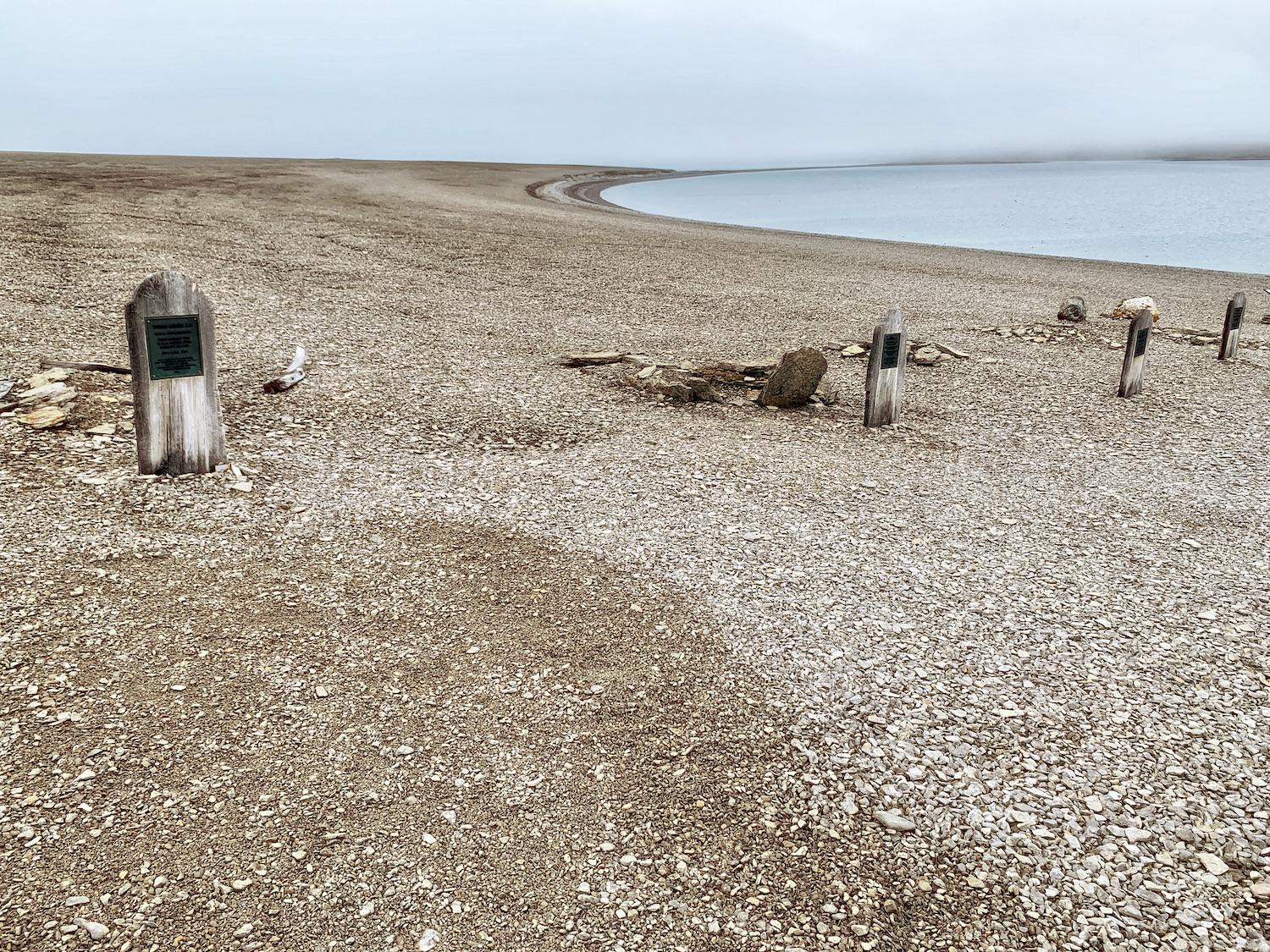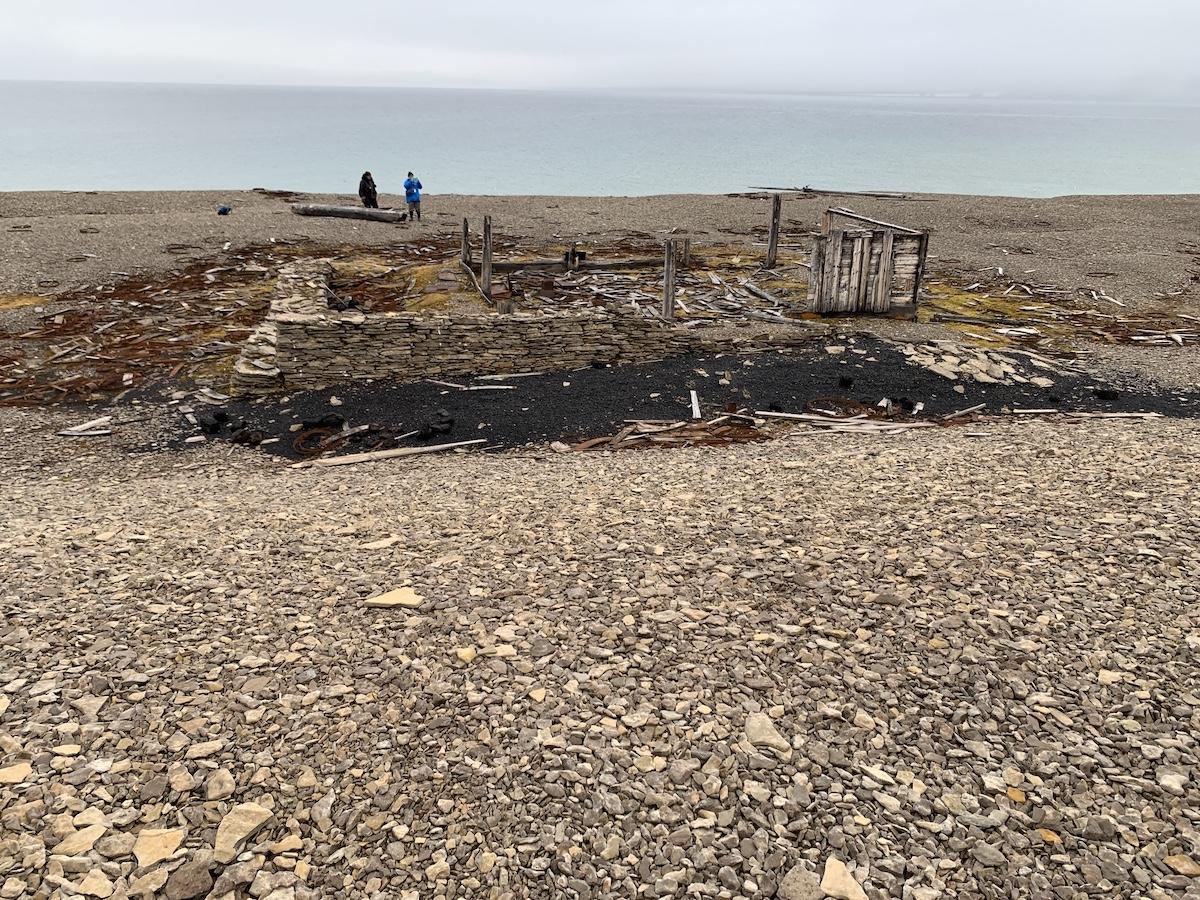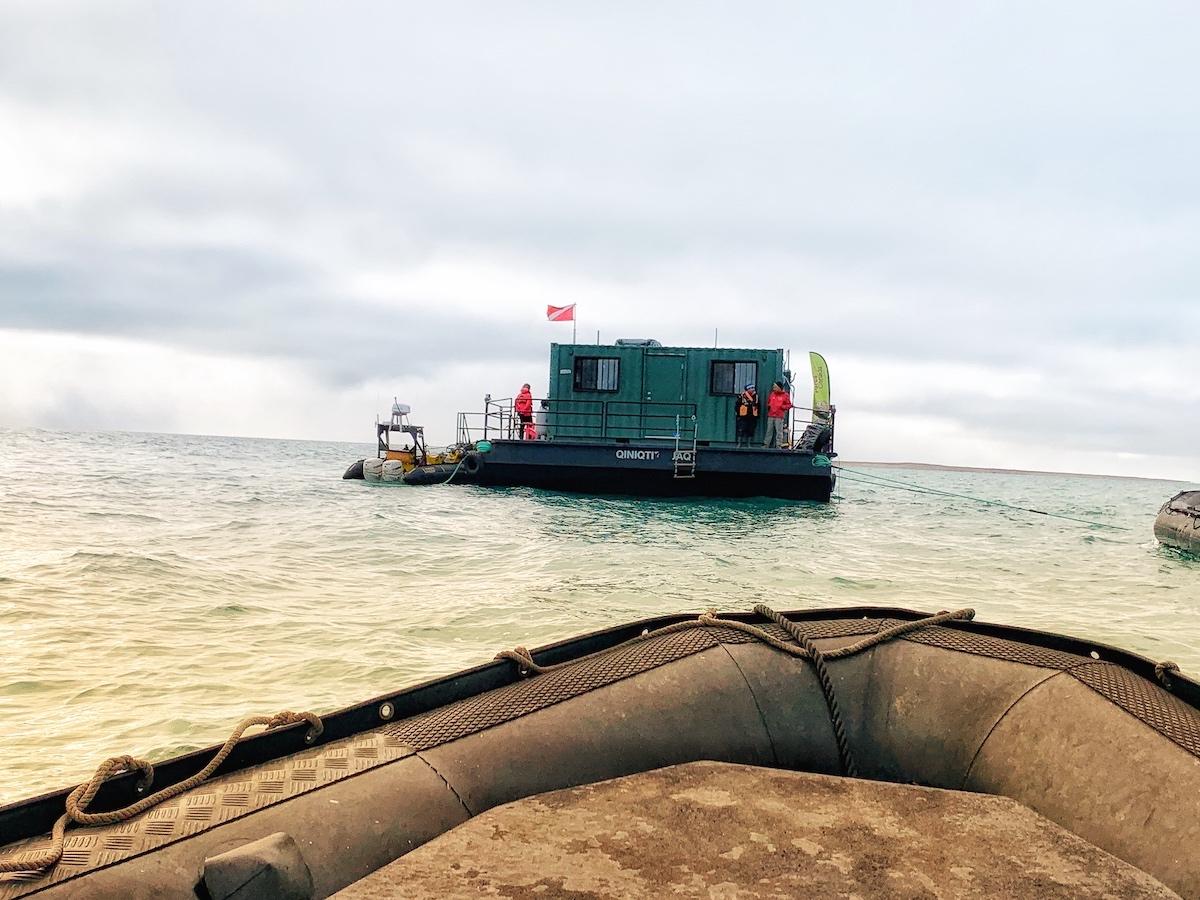
The graves at Beechey Island National Historic Site in Nunavut/Jennifer Bain
Beechey Island beckons to all those fascinated by the story of Sir John Franklin and his ill-fated crew whose 1845 journey to find the Northwest Passage ended in tragedy and mystery.
To get to this remote part of Nunavut in the Canadian Arctic, you almost certainly need to join an expedition cruise that explores the Northwest Passage. This is where Franklin’s expedition overwintered in 1845-1846 despite relatively little protection and near where he became icebound off King William Island the next year.
“It’s not necessarily a very mysterious site,” allows Russell Potter, an English professor at Rhode Island College and author of Finding Franklin: The Untold Story of a 165-Year Search. “But it is the most visible physical remains of the Franklin Expedition.”
The highlight of Beechey Island Sites National Historic Site is a row of four wooden graves with weathered bronze plaques on the rocky shore. Petty Officer John Torrington, Royal Marine Private William Braine, and Able Seaman John Hartnell were all part of Franklin’s crew. A fourth grave confuses people and is that of Thomas Morgan, who died during one of the dozens of expeditions to find out what happened to Franklin’s group.

Adventure Canada expedition cruisers gather near the graves, keeping a respectful distance/Jennifer Bain
It’s appropriately grey and foggy the September 2019 day that I visit with Adventure Canada. I remember zipping to shore in Zodiacs and taking turns gathering in small groups a respectful distance from the markers and then cautiously exploring the area under the watchful eyes of our polar bear monitors.
Franklin and his 128 men set sail from England on two ships — the HMS Erebus and the HMS Terror — to find the fabled Northwest Passage, an imagined shortcut from Europe to Asia for trade purposes. The ships soon disappeared within the Arctic Archipelago that is part of the Inuit homeland and what has since become Canada’s youngest territory, Nunavut.
The explorers battled unrelenting ice, scurvy and lead poisoning from improperly tinned food, and some resorted to survival cannibalism, before they all died over the next few years. While the search continues for Franklin’s grave, the wreck of the Erebus was finally found on Sept. 2, 2014, and the Terror was discovered on Sept. 3, 2016.
Potter wasn’t on my cruise, but he has been to Beechey multiple times starting in 2004 for the NOVA documentary episode “Arctic Passage: Prisoners of the Ice.”
“At that moment, I really thought I’d never have the privilege of being there again. The expedition cruise industry was, at the time, a very small one,” he remembers. But he got to return as a cultural historian/guide with several different expedition companies. In 2017 alone, he visited Beechey three times and even got to guide author Michael Palin who was researching his book Erebus: One Ship, Two Epic Voyages, and the Greatest Naval Mystery of All Time.

The ruins of Northumberland House on Beechey Island form part of the historic site complex/Jennifer Bain
Potter calls the graves “sombre and impressive” and says everyone likes to start there before exploring the rest of the remote island site. He has relished the chance to be able to talk about history and be able to say `Here it is — I’m here’”
Parks Canada describes Beechey as a peninsula connected to the larger Devon Island, noting “it is a bare, windswept island, which rises to a small hill, fringed by a narrow beach. This setting provided suitable flat and sheltered land for Arctic expeditions.”
The national historic site includes five archaeological sites on Beechey and Devon and in the nearby sea — the Franklin wintering camp of 1845-46, Northumberland House, the Devon Island archaeological site at Cape Riley, two message cairns and HMS Breadalbane National Historic Site of Canada.
Beechey was designated a national historic site in 1993 because it comprises the wintering site of Franklin’s Northwest Passage Expedition plus an archaeological complex containing representatives of most types of 19th-century Arctic exploration sites. It’s an important shrine for visitors because of its association with the “grand rendezvous” for the Franklin search expeditions of 1852-54, which resulted in the exploration and mapping of a large part of the Canadian Arctic Archipelago, and with the “myth of Franklin.”
Parks Canada explains that many ship crews wintered here. The disappearance of Franklin’s expedition prompted surveys and exploration of a large portion of the Canadian Arctic. Beechey Island was used as a base and supply depot for these expeditions for the next decade. The search led to further significant discoveries, including the discovery of three Northwest Passages and the mapping of half of the Canadian Arctic. This flurry of activity left a large number of archaeological resources on the island and in the waters adjacent, ranging from cairns and graves to the ruins of wooden buildings and the wreck of HMS Breadalbane.

Taking a Zodiac to the Parks Canada diving barge studying the wreck of the HMS Erebus/Parks Canada
Not many dare hope to see the wrecks of Franklin’s two ships, but in 2019 my Adventure Canada expedition became the first to make it to the Wrecks of HMS Erebus an HMS Terror National Historic Site as a pilot project to see how a visitor experience might unfold. Co-managed by the Inuit and Parks Canada, the area is also watched over by an Inuit security team known as the Guardians.
We met the Guardians and took Zodiacs to the barge where Parks Canada’s underwater archaeology team was busy at work searching the HMS Erebus wreck. We disabled the GPS functions on our phones and cameras to protect the location and agreed not to shoot underwater photos to protect the site.
To be honest, the sea was choppy that day, so there wasn’t much to see in real life, just on the barge’s computer screens. But we also got to spend time on the RV David Thompson, a Parks Canada research vessel, and chat up a few of the underwater archaeologists about how their sonar and film equipment works and how they must figure out how to engage the public about the famous wrecks.
It's an experience never to be forgotten. With the Canadian Arctic closed to cruises in 2020 and 2021 because of the COVID-19 pandemic — and because the wrecks are so inaccessible to begin with — Parks Canada does make sure that people can follow along online to learn more about the artifacts and artifact conservation.

 Support Essential Coverage of Essential Places
Support Essential Coverage of Essential Places




Comments
Fascinating.
Thanks for sharing this with us.
I have read the foregoing with great interest. Sir John Franklin is my four-Greats Uncle on my father's side, and I have been three times through the North West Passage by different routes with David Cowper in his boat 'Polar Bound'. (Polar Bound' is something of a legend in these waters as David's first voyage was in an old lifeboat, the 'Mabel E. Holland' back in the 1970's). Since then he has circumnavigated the world solo, seven times in his yacht, Ocean Bound, and then in Polar Bound. and is even now preparing hissailing boat,a 'Tradeind 35' to compete in the single-handed Golden Globe Race starting from Les Sables d'Olonne in Brittany in September 2022 - he will be the oldest competitor.